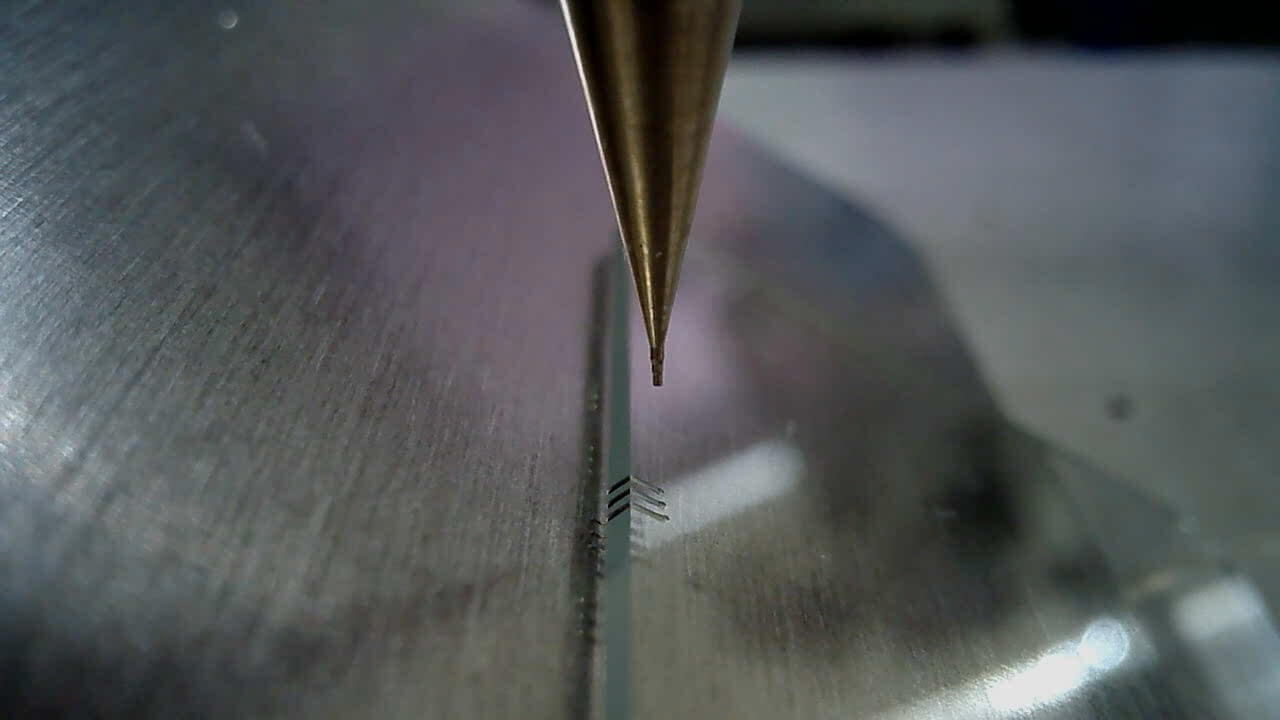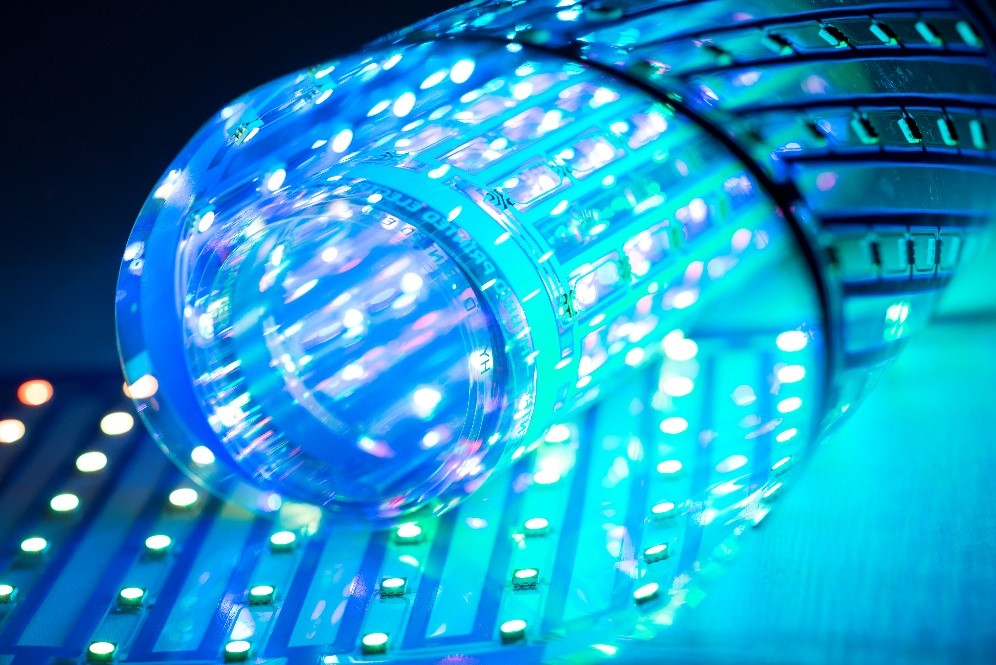At NovaCentrix, we understand that the success of emergent markets like printed and flexible electronics depends not only on cutting-edge technology but also on thriving ecosystems. Collaboration across the value chain is essential to turn innovative ideas into real-world solutions. That’s why partnerships are at the heart of what we do.
In this spotlight, we are proud to highlight our partnership with IDS, a leader in aerosol printing systems. IDS brings unmatched expertise in precision deposition technology, which perfectly complements our advanced Metalon® conductive inks. Together, we are helping to shape the future of electronics by delivering integrated solutions for applications ranging from prototyping to large-scale manufacturing.

We sat down with Dov Phillips, (Sales Manager, IDS). Dov has been with IDS for three years and works with IDS customers to solve applications and technology related challenges. Our questions to Dov are in blue and his answers are in black below:
Tell us a little bit about IDS
IDS or Integrated Deposition Solutions was founded in 2013 in Albuquerque, NM, and we have been selling aerosol print systems since 2017. Our mission has been to produce the most reliable and user-friendly aerosol print systems on the market.
What is NanoJet Aerosol Print Technology?
The NanoJet systems work by creating a dense cloud of aerosolized materials which are transported through our print head using a carrier gas. These aerosolized droplets are then collimated into a tight beam of material and jetted out of the system and onto the substrate. We are able to print a wide range of conductors, dielectrics, and polymeric materials with very high resolution, reaching minimum line widths at or below 15 μm.


The NanoJet is able to control the flow of these materials with industry-leading precision through the use of a patented multi-lens focusing system which aids considerably in maintaining the collimation of particles.
The NanoJet print systems are available in three different product lines: our Subsystems which can be mounted onto a wide variety of motion platforms, our Desktop system which is used often for rapid prototyping and R&D, and our large Free Standing system which is a very high-precision 3-axis print platform available with one or two print heads and a lot of options for material processing.
What are the biggest advantages/ pain points that are being solved by the NanoJet systems?
The NanoJet system has this great ability to print really high-resolution features with no contact to the substrate. With a maximum stand-off distance of up to 10 mm, a user can print onto non-planar surfaces without needing to tediously surface-map every part. This is great for printing vertical interconnects, repairing circuit traces, printing antennas, and even multi-material stacks such as thin-film transistors and insulated conductors.
Historically, the limitations for aerosol printing were that the print rate could be a bit slow and as a new technology, there were not so many ready-to-use inks on the market. Fortunately, both of these issues are becoming things of the past. The NanoJet system is capable of printing at speeds up to 100 mm/second and where the trace widths used to be limited to 15 – 150 μm, our new high-output systems are capable of printing materials that are millimeters wide. And for ink, we are very happy for companies like NovaCentrix who have been making high-quality inks specifically formulated for use in aerosol print systems. These advances have really helped push the technology from the R&D space and into manufacturing areas.
Which areas are customers coming from (technology, applications area and market space wise)?
Our customers’ applications fall all over the map, it’s really exciting to see. Historically, aerosol printing has been used in electronics for fine-line interconnects, antenna structures, and microcircuits, but we’re seeing adoption in many new industries.
In the biomedical field, our systems can be used to print biocompatible conductors such as the NovaCentrix JG-027UA nanoparticle gold ink as well as high-precision polymeric coatings. The non-planar printing capabilities are also great for the new generation of wearable devices and things like high-precision strain gauges.
Right now, we’re seeing a large push for aerosol printing in the manufacturing of AR/VR devices. This includes both the electronics miniaturization in AR glasses for lightweight packages and high-precision optical coatings for glare reduction.
As devices and packaging keep getting smaller and smaller, I think we’ll continue to see this need for aerosol printing grow at a significant pace. There are so many things the technology is capable of, from wire-harness replacements for the automotive/aerospace industries to high-output precision coatings to impeding electronics onto 3D printed parts and our technology is ready to fill those needs.
Other important NanoJet customers are machine OEMs who integrate our print heads onto their multi-tool / multi-axis platforms. OEMs find our systems easy to integrate, and that the technology nicely complements other industry-proven additive manufacturing processes.
Can you please elaborate on the materials requirement for aerosol printing?
Aerosol printing requires the ink to be low viscosity and have small or no nanoparticles and we want to avoid things like foaming. Beyond those factors, we are really looking for strong batch-to-batch consistency since there is that fine equilibrium required for the types of high-precision printing performed by our clients.
The materials that are in high demand by our clients are silver, gold, carbon, platinum, and all sorts of dielectrics.
How does NovaCentrix’s inks meet those requirements? What are the advantages?
NovaCentrix, does a great job of creating inks that have been fine-tuned for the IDS systems. For customers who need nanoparticle silver ink, we often recommend the JS-A554 Silver Nanoparticle ink.
A great part of our partnership with NovaCentrix is the flexibility of the ink formulations that are available to us and our clients. Different surface materials and printing conditions may require specific co-polymers and
NovaCentrix does a great job of providing a wide range of options to our customers.
Can you please elaborate on the partnership between IDS and NovaCentrix?
IDS works closely with NovaCentrix in a number of different ways. We have regular check-ins that allow our two groups to coordinate our responses to new developments in the industry and we’ve partnered on a number of projects.
We’ve also begun to provide a silver nanoparticle ink from NovaCentrix to our customers when they purchase one of our systems. We have always provided a non-toxic polymeric test ink for training and calibration of our systems but after requests for a baseline conductor from clients, we’ve added the NovaCentrix to our standard offerings.
A nice thing about this partnership is that IDS has a new platform, our NanoJet Gen2, which has a new software package that allows for recipe logging and sharing. So, when a customer starts to use a NovaCentrix ink, we can simply send a small file, instruct what nozzle they should use, and they can begin printing right away with really repeatable results.
As aerosol printing continues to be implemented in manufacturing settings, it’s really important for IDS to continue to work closely with companies like NovaCentrix and we’re very excited to see this partnership continue to mature to the benefit of our customers.


